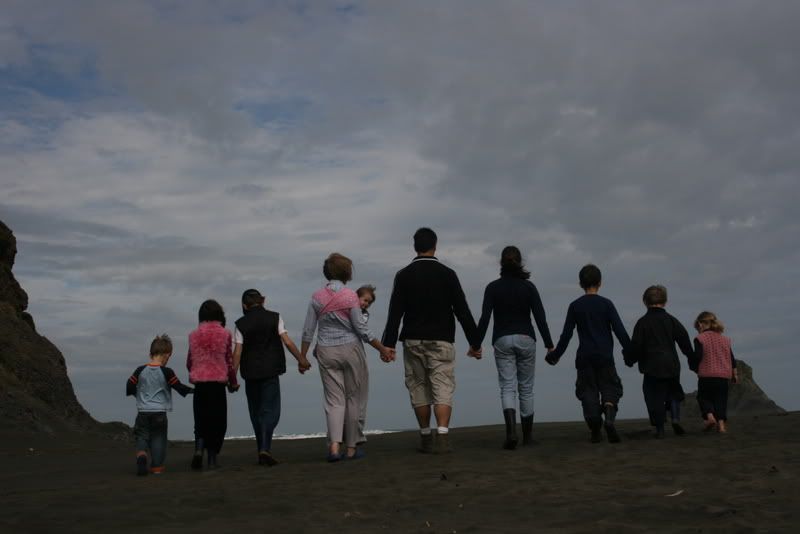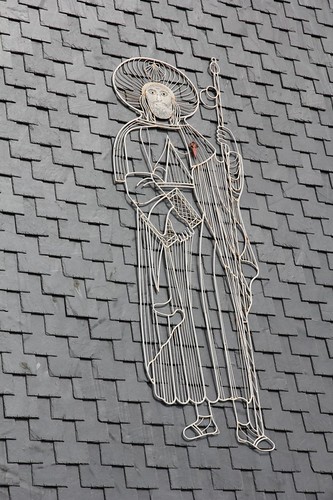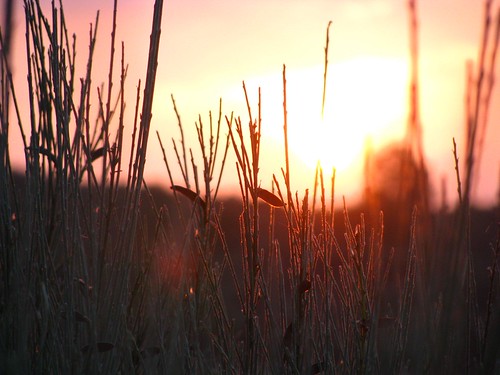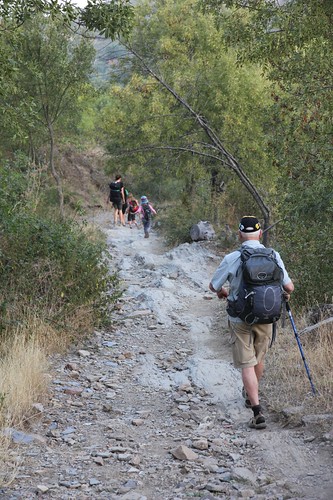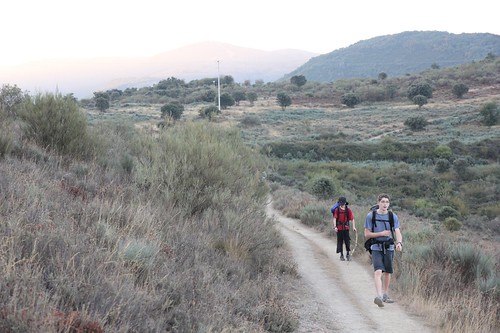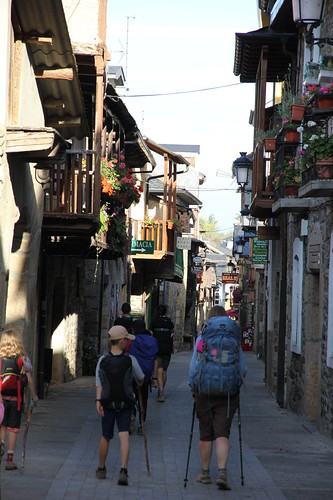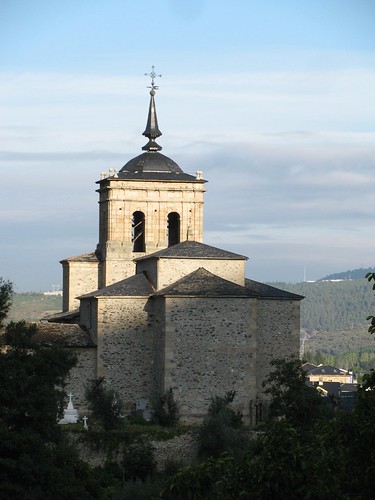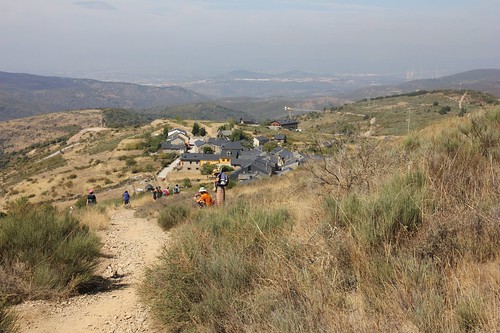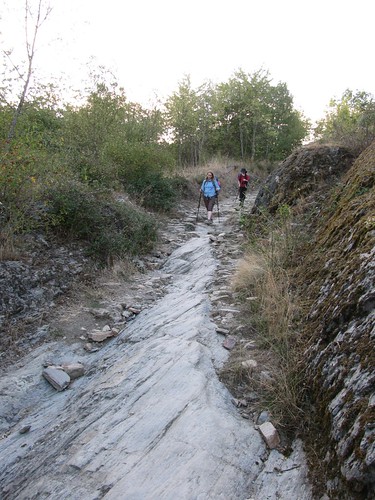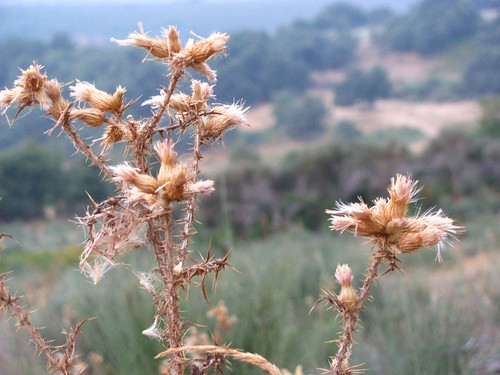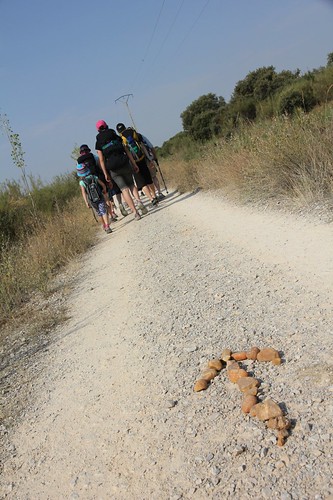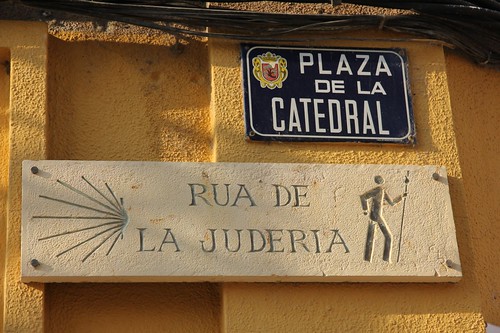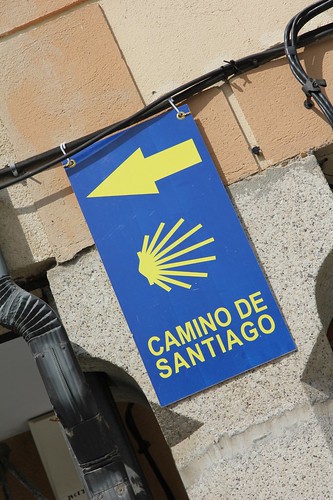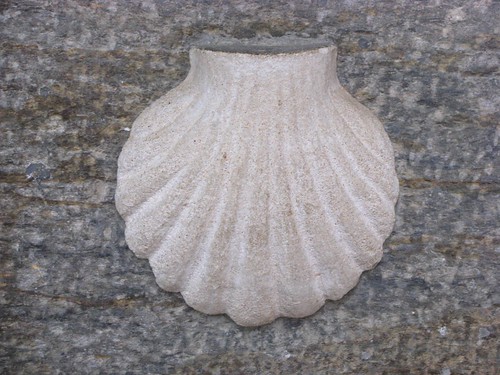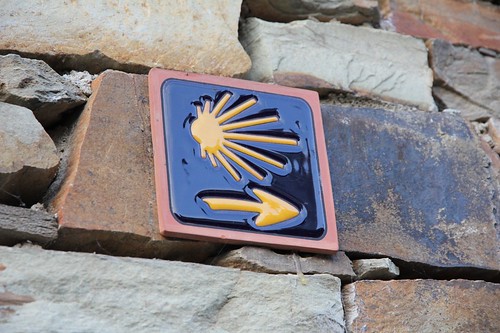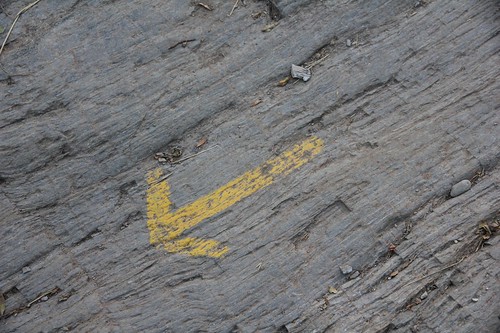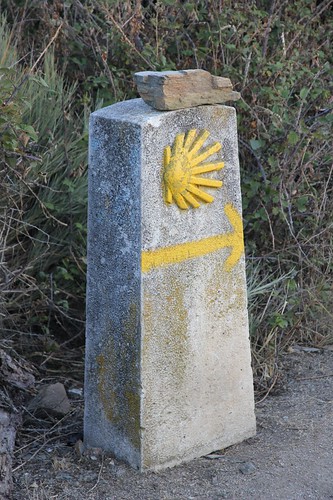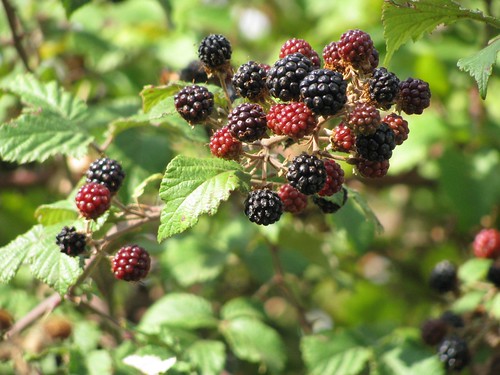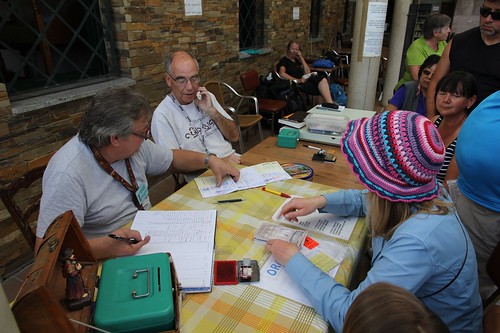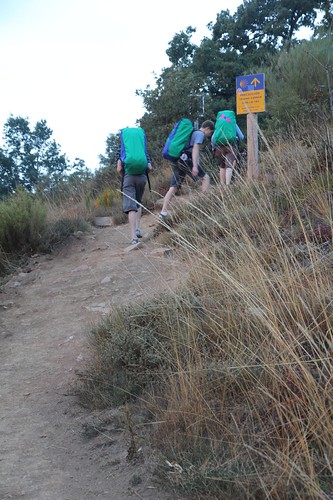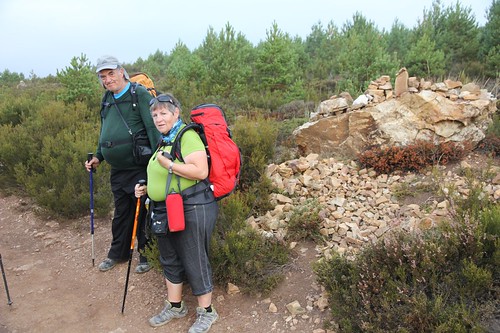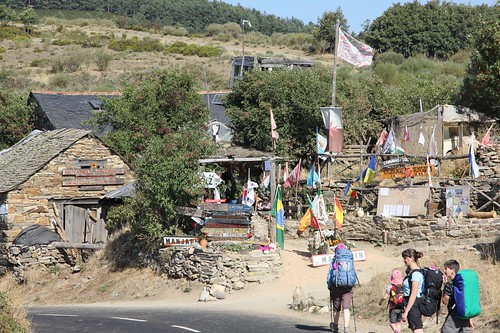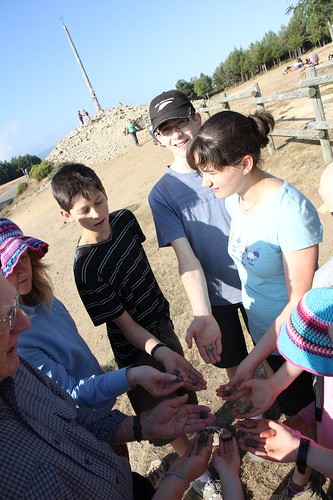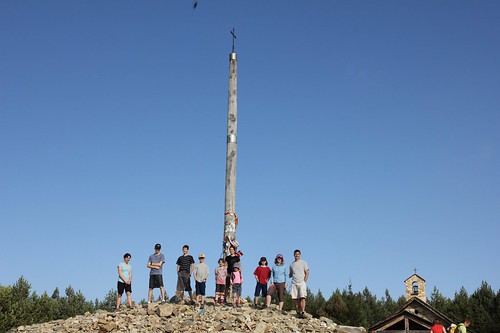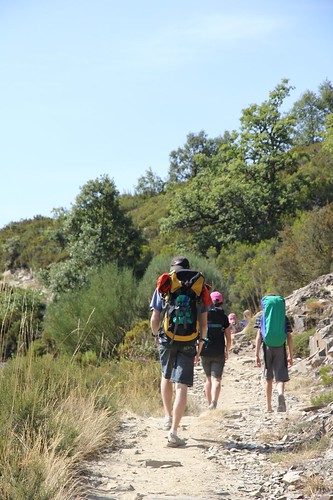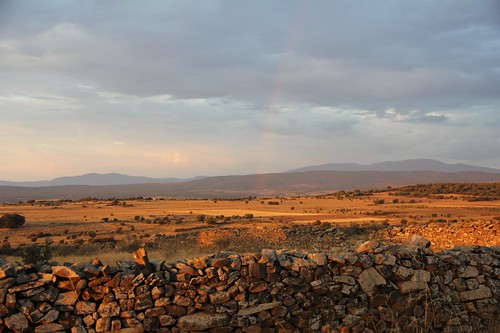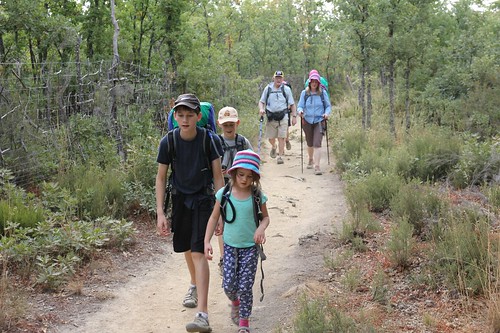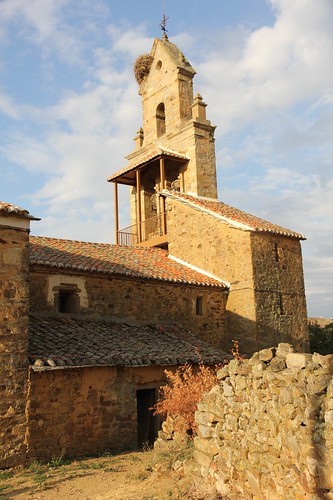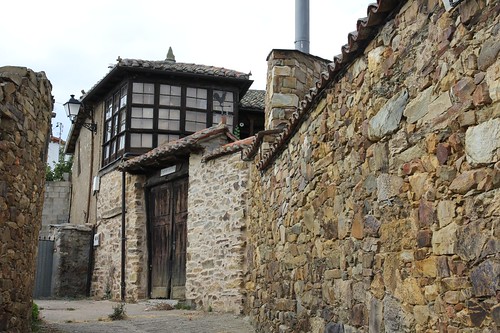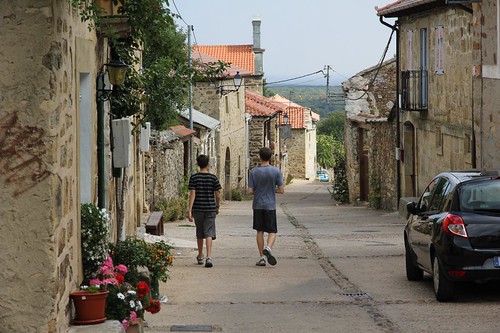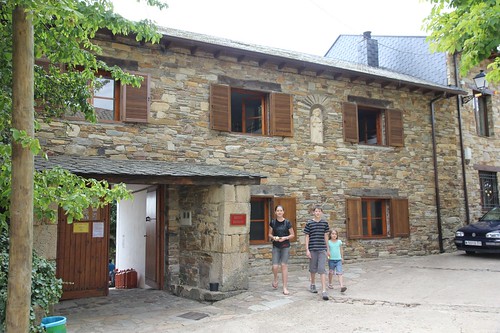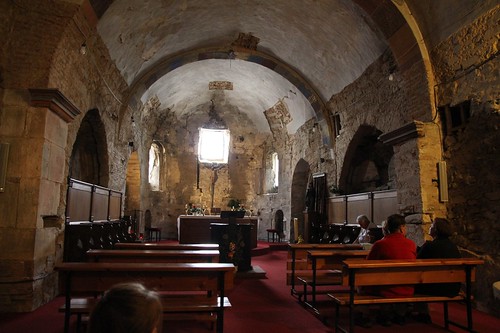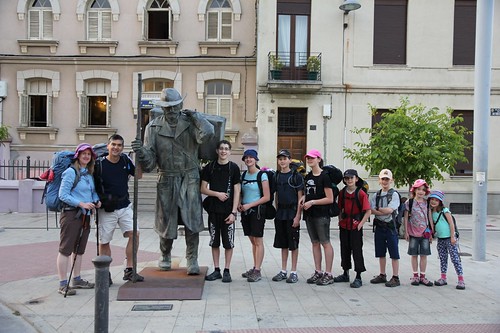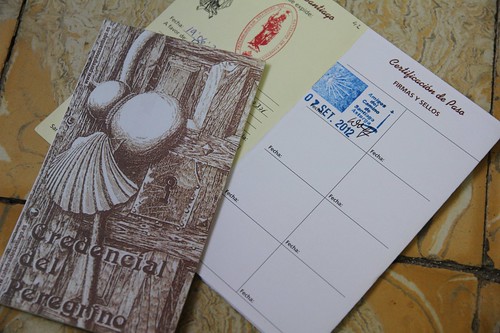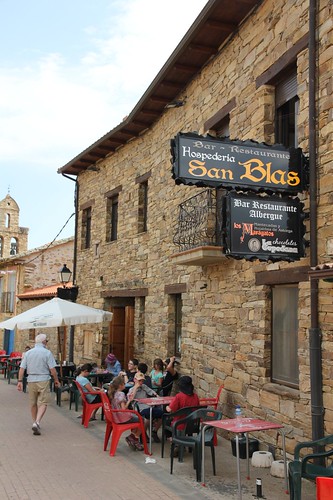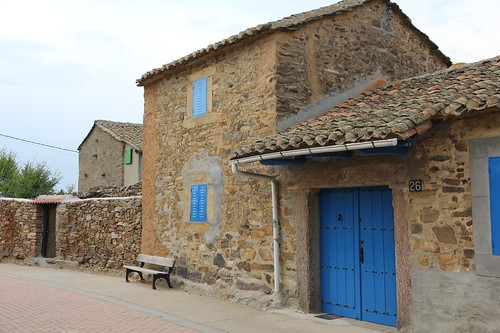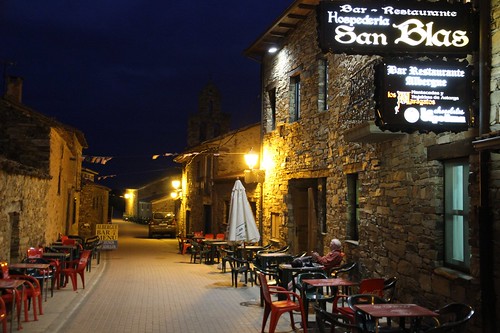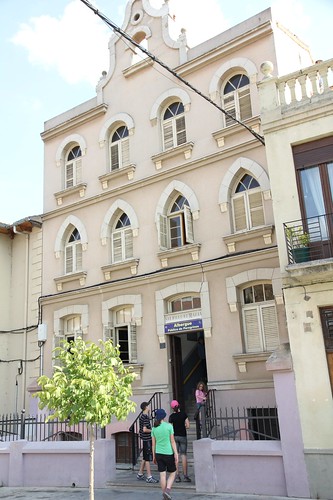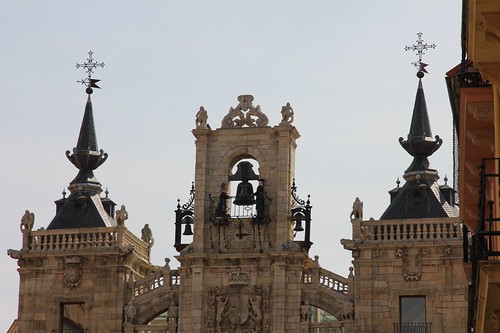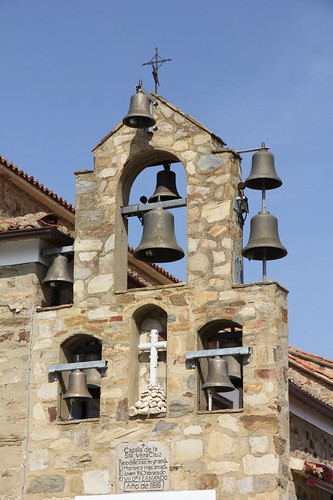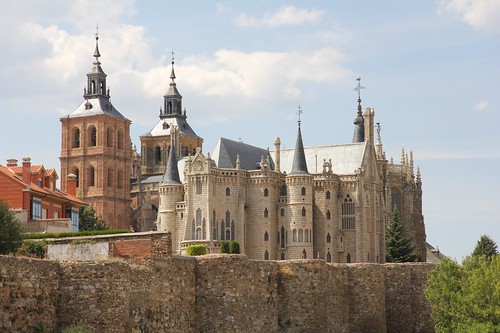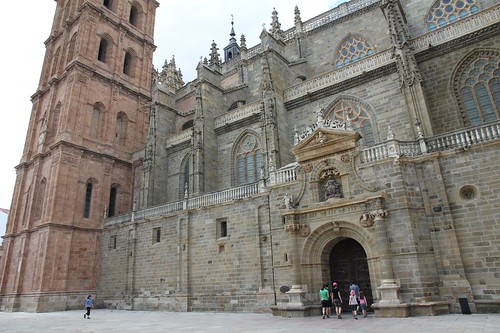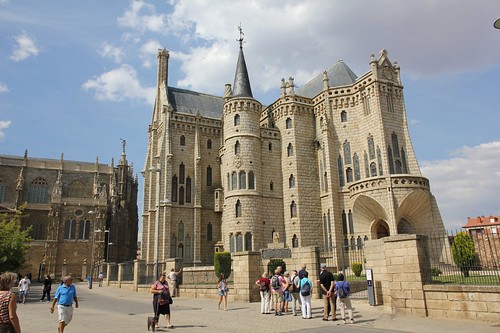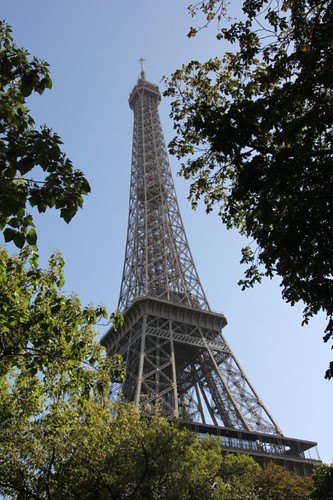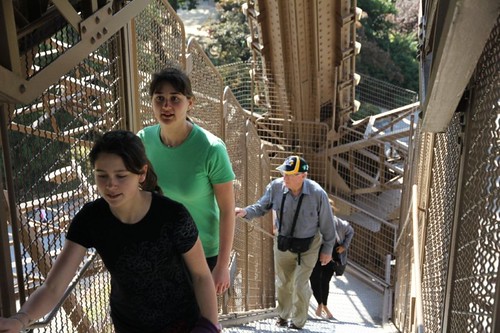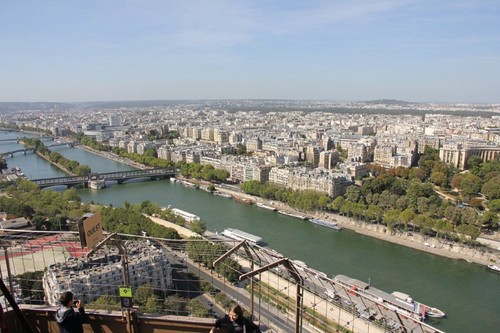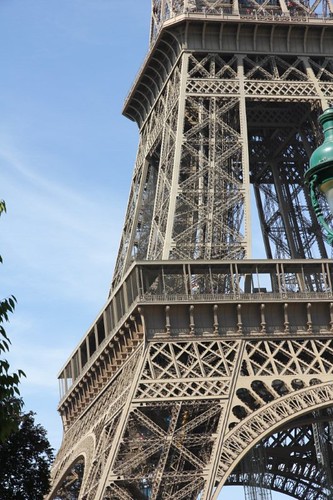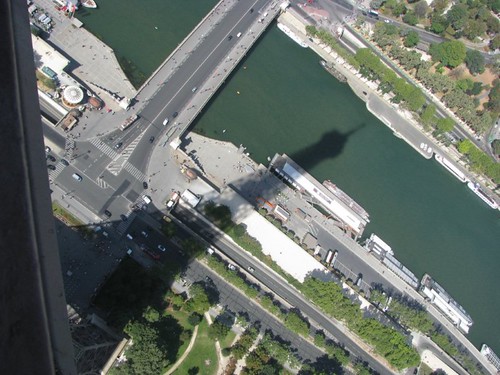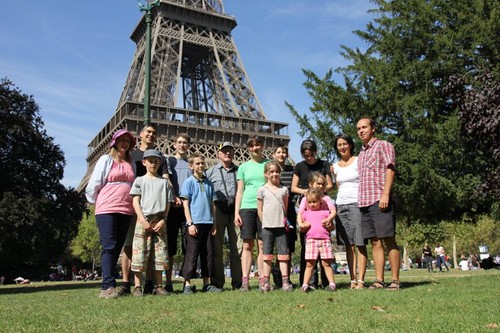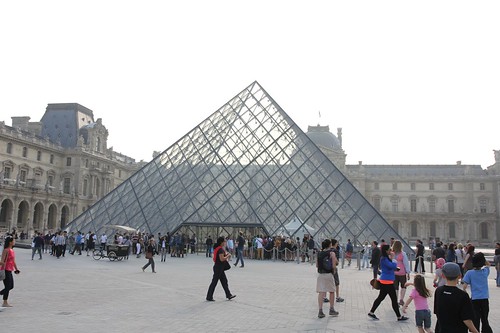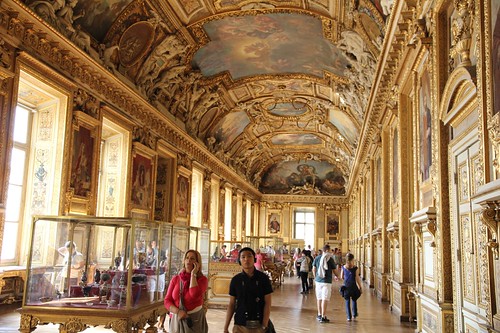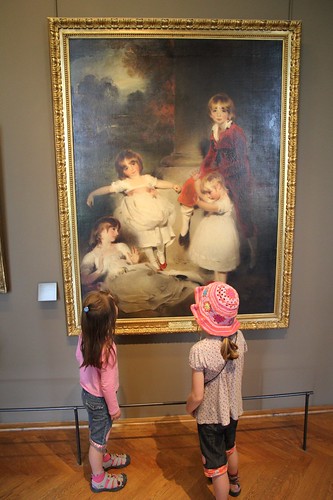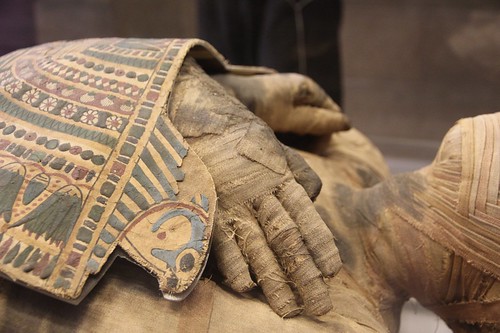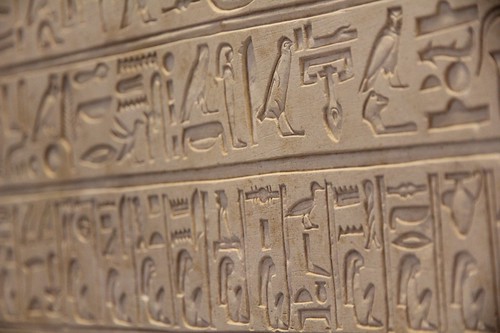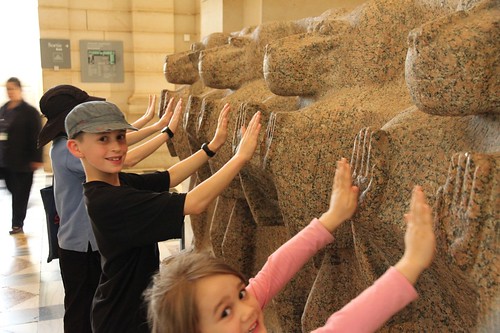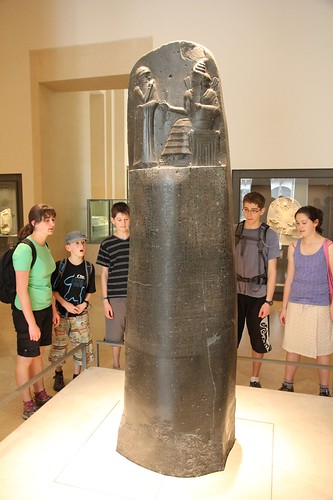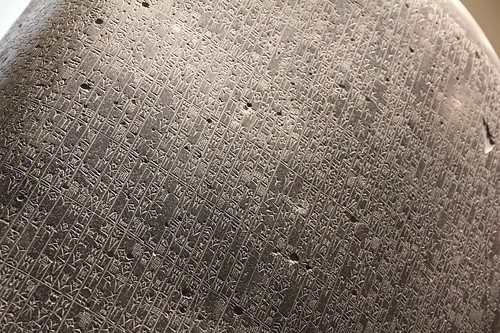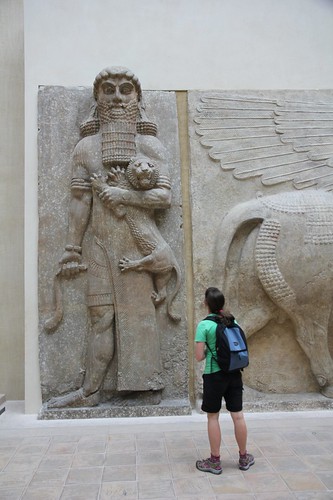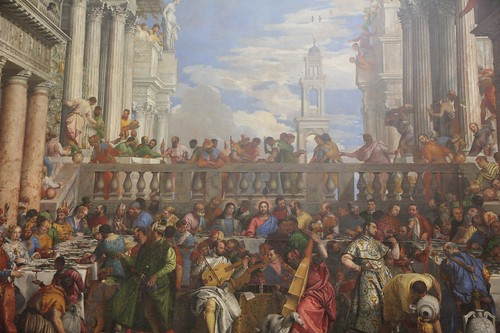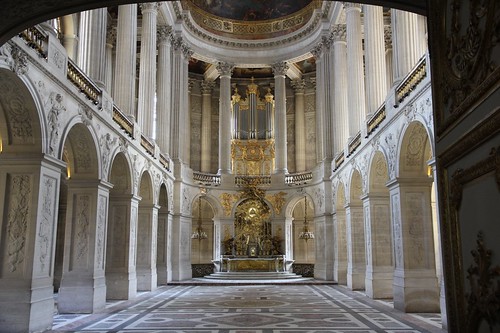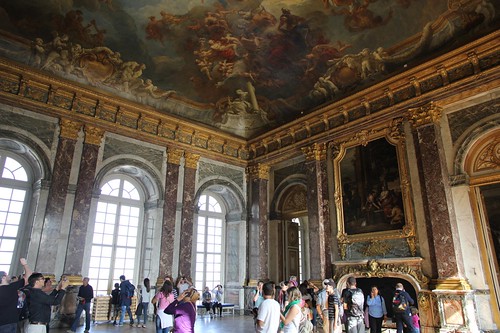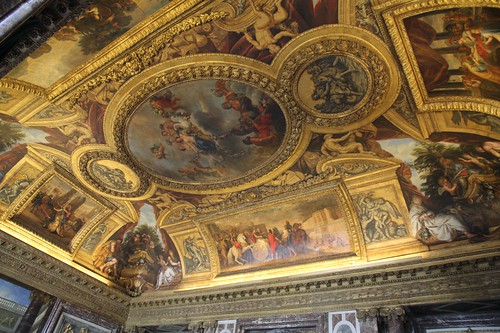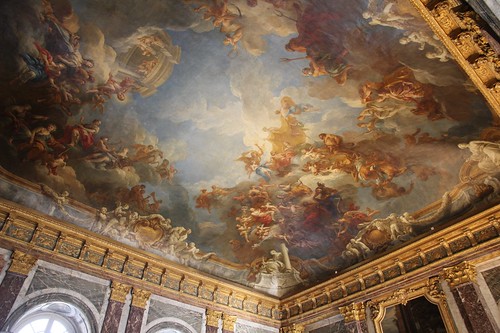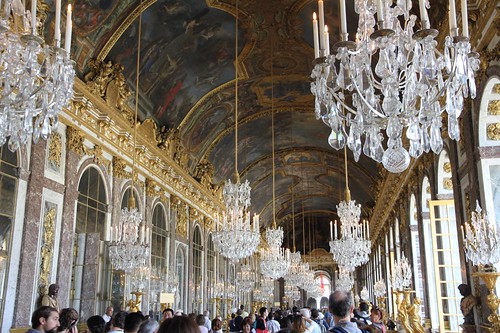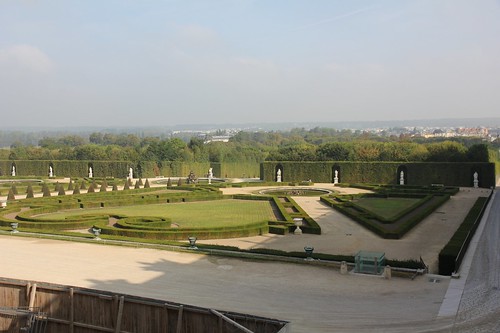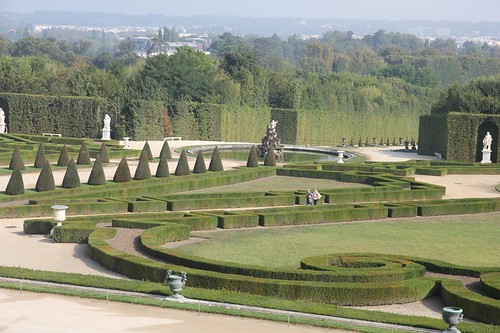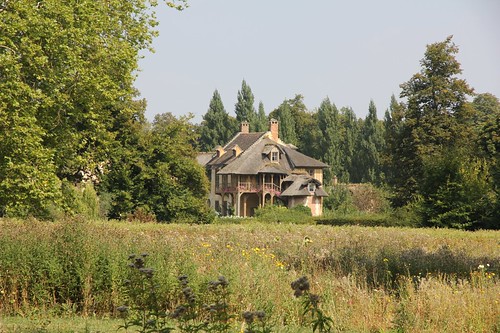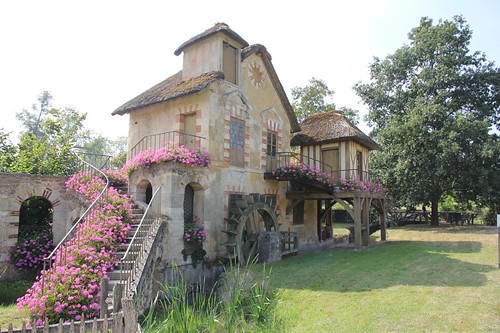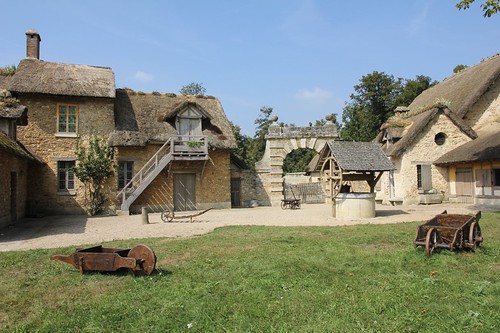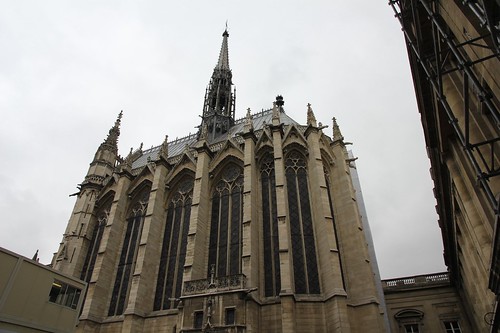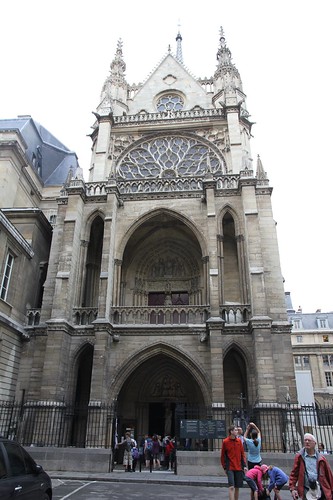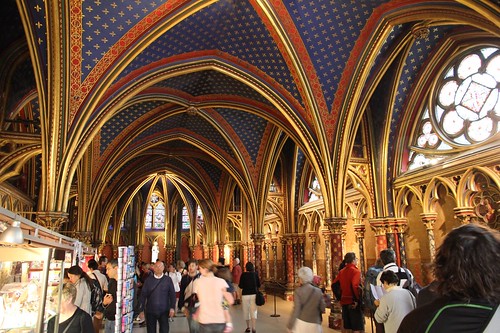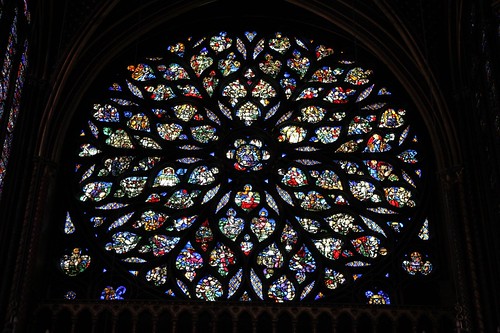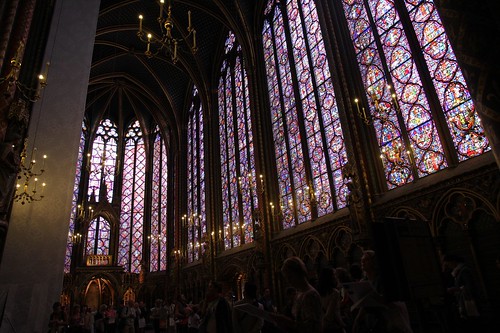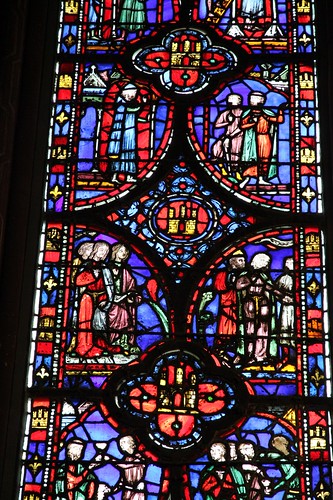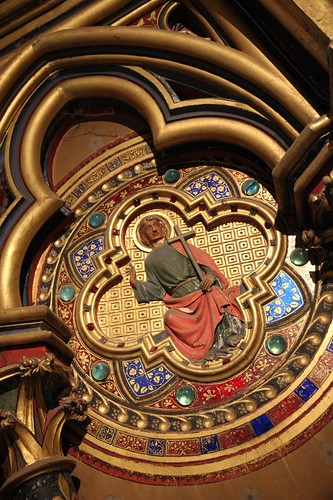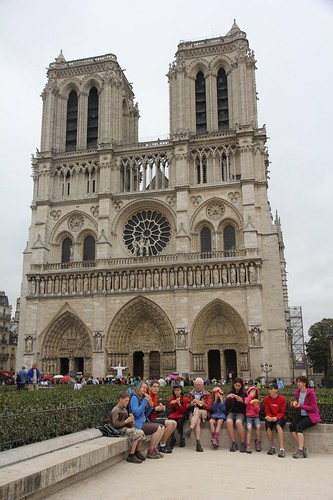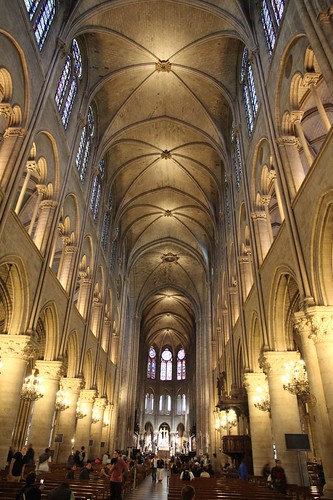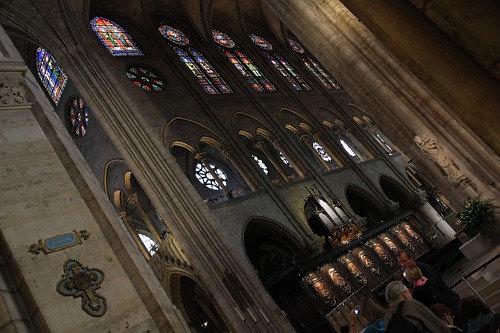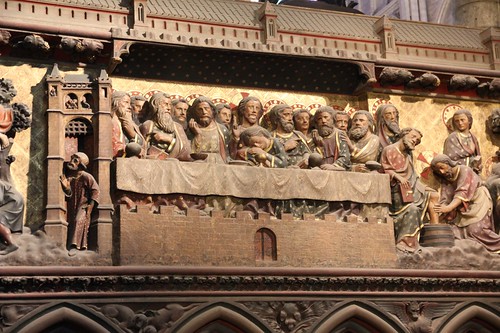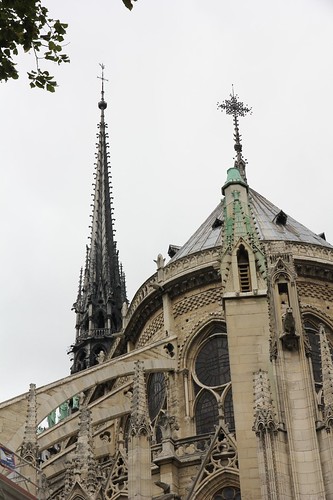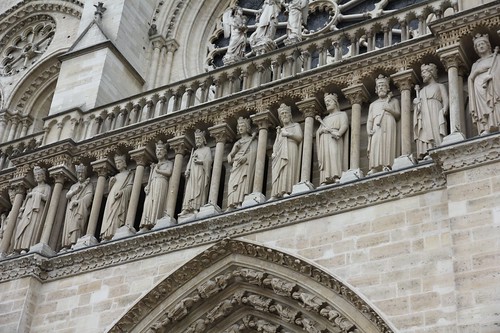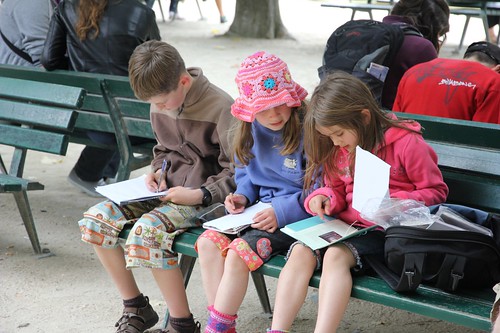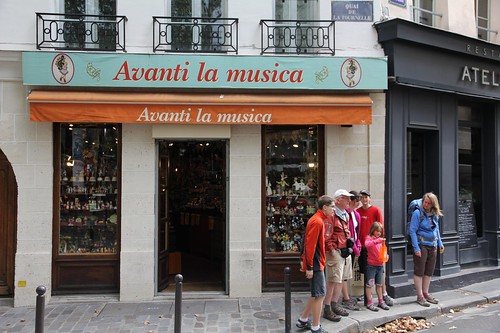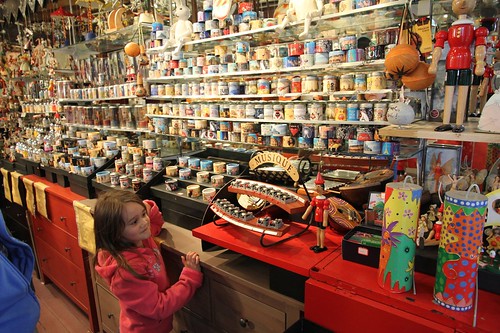We are real peregrinos now
September 11th, 2012Day 4: Distance travelled 16.5 kms. Total ascent 28m – descent 584m
Weather: Cloudy cool morning, clear hot afternoon. Est: 28+ degrees
It’s only been four days, but we are in the pilgrim rhythm and acting like all the others around us instead of looking like the fresh new kids on the block. Even three days ago people commented on how fresh we looked and we didn’t really understand. Today half of us have the pilgrim hobble and the other half are scratching bedbug itches. Last night we shared a dorm with 22 others (and when I say dorm I mean an ancient stone building with massive wooden beams and creaky wooden floors upstairs and slabs of rock underfoot downstairs), and so we were woken early. Being in an albergue that supplied breakfast, we all sat bleary-eyed together drinking coffee or chocolate and eating slabs of dry bread with peach or strawberry jam. We quickly check washing lines, finish filling packs and peek under the bunks to make sure we have forgotten nothing. Apply tea-tree oil to keep the bugs away, apply sunscreen to the back of the legs and arms as the sun will be at our backs all day, when it finally rises, collect hiking footwear from the communal shelf (no boots in rooms, you know…..we started with sandals of ten different colours – now they are all deep orange), check sunhats are easily accessible, pick up walking poles and head out the door into the semi-darkness. It will be half an hour or so before the sun is up and we value every moment walked in the cool of the day. Although everyone sets out at about the same time, we are soon alone on the track.
Step follows step until the sun is rising and we turn to watch the red ball pop over the mountaintop or trees (depending on where we are), step follows step for another hour or so until we take an obligatory rest stop for a few minutes. Then step follows step, we sip frequently from water bladders, adorn heads with hats, keep on walking, sometimes sticking as a group, sometimes stretching out along the path at our own rate. Sometimes we catch another couple of pilgrims while they rest, and later they will pass us again, always exchanging a “Buen Camino!” or perhaps a greeting in their mother tongue as we get to know who these people on the route are (mostly Germans or Spaniards, but also Poles and Brits and Finns and Italians and Dutchies and Canadians and an Irishman and a newly-wed Czech couple).
We will see interesting insects and broad panoramic vistas. Hills that were yesterday in the far distance are soon being climbed, a town that looks so far away you’d never consider walking to it at home, is soon behind us.
Children play “find the arrow or shell” as we look for the waymarkers that show us where to go.
We stop to sample blackberries or grapes growing by the path (but leave the ones that clearly belong to someone, of course!)
At some point one of the hourly breaks will be longer and we’ll eat lunch. Then we’ll be on the road again, pressing on towards the next albergue, because it’s first-come-first-served and we are a big group! Sometimes we arrive before opening time, yesterday we were second to arrive, but only five minutes later the place was “complet”. Paperwork is done….the hospitalero records details of everyone walking, stamps your pilgrim passport and takes your money – maybe 5 euros, maybe a donation, then you claim (or are shown to) your bed.
You shower and wash clothes (not in the sink – make sure you use the washtubs that are usually situated outside in the courtyard) and you’re done for the moment. The first day it felt strange to be all fresh and clean mid–afternoon, but as I have already said, we are true pilgrims now. Other pilgrims seem to crash onto their bunks, but we find ourselves journalling and playing cards or wandering around the town we have ended up in. We might bump into someone we had met earlier and stop for a chat. Do you remember Emilio and Mercedes from yesterday? They turned up at the same albergue as us today….we bumped into them again when we were all looking for food for dinner once siesta was over at 5pm and shops reopened….and then they turned up at our table outside, under the grape arbour beside the stone wall as we ate….they offered wine, and not just any wine, but wine bearing his family’s label, from a vineyard established by his great-great-grandfather. Mercedes promised the children chocolates would follow if they finished their dinner (at least we thought that was what she was saying……..no chance of the kids NOT eating – they are ravenous at the end of the day), and she was true to her word. With Emilio translating she explained that “fathers are for giving an education to their children and grandmama’s are for giving chocolate”. Our children now have a Spanish grandmama!
Dinner done, dishes washed, water bladders filled for tomorrow, we consider the options for the day. We look at how far away the various albergues are, whether food is readily available along the way, how we are feeling and how far we think we might be able to go, and we make a tentative plan. (Tomorrow’s plan is for NOT TOO FAR as we have a dozen tender feet between us…..besides, there’s a Templar Castle here that we want to take a look at and as Louis L’Amour so aptly said, “Too often….I would hear men boast of the miles covered that day, rarely of what they had seen.”)
The sun is still high in the sky, the evening is delightfully warm, FatherBear finishes the blogging and we might take a short walk round town or sit talking with fellow pilgrims. Kids collapse into bed, and the adults soon follow. It is not long before someone is snoring, a rooster is crowing despite the late hour, church bells are ringing out the hours and a dog barks in the distance.
It will not be long until it starts again tomorrow.
by MamaBear



